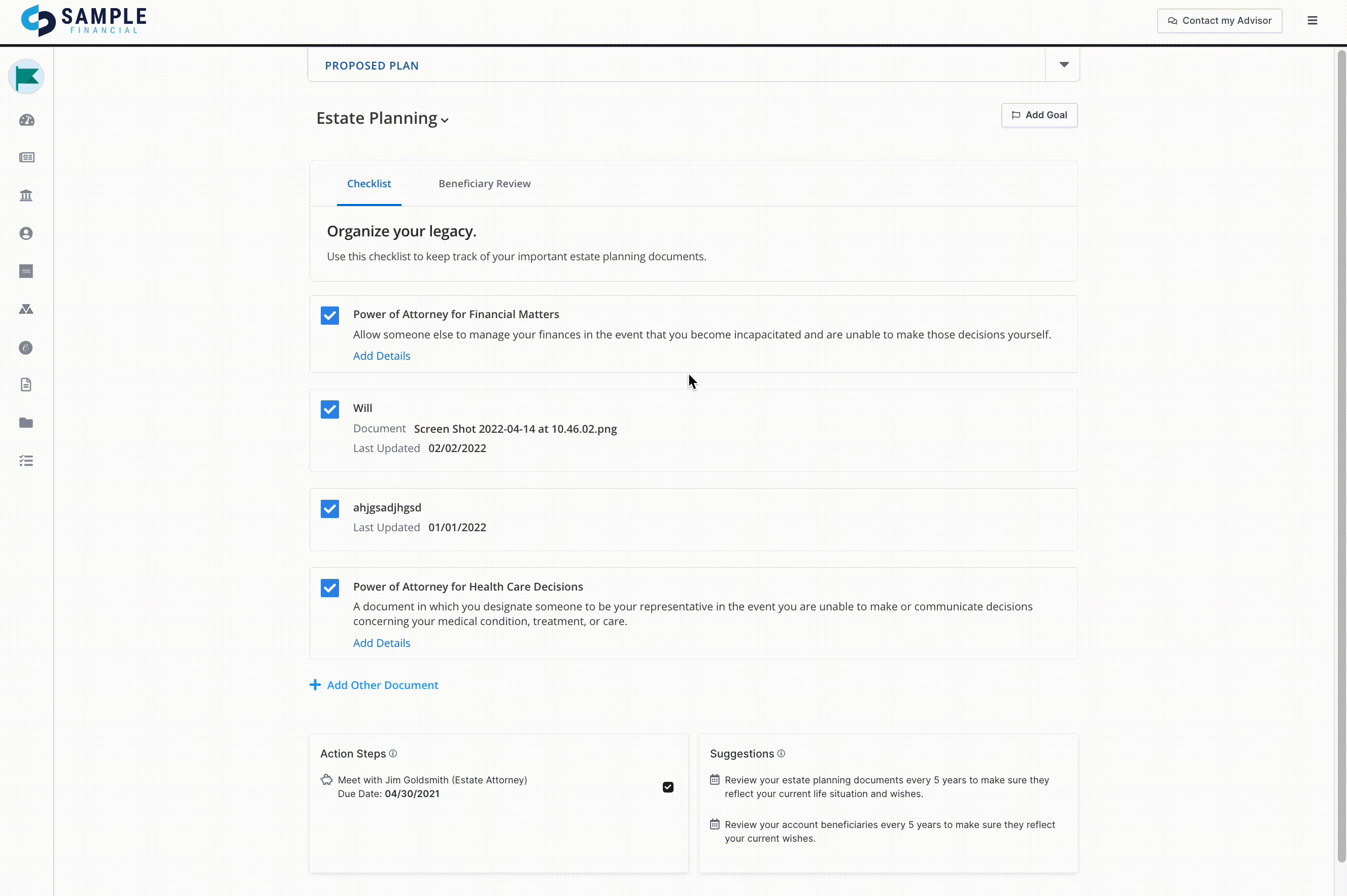Innovative Estate Planning Tool


I designed an interactive flowchart that helps advisors guide clients through complex estate planning. The tool closed a major UX gap and supports Orion’s strategy around the $72T intergenerational wealth transfer.
Press Release: Business Wire
The initial goal was to create a flowchart based on existing cash flow data, turning complex data into a visually understandable format. With the addition of the Estate Planning tool, advisors are now in a position to dedicate their time to expansion, targeting high-net-worth and ultra-high-net-worth investors who are likely to need these services.


Through eight user interviews, we uncovered a key insight:
advisors and clients approach estate planning with very different needs — and different mindsets.
That insight became the foundation for our flowchart design — a visual tool that helps advisors guide, and helps investors understand.
As part of my early strategy, I analyzed the estate plan flowcharts of competitors like Vanilla and Weath.com to identify visual design patterns, missing features, and areas where Orion could differentiate. This research inspired a flowchart-first approach that emphasized clarity and simplicity.
I had overlooked a critical component: the actual workflows advisors follow to build and adjust estate plans. This gap became clear during our first stakeholder review, ultimately shifting the direction of the project.

I started with a simplified flowchart to visually represent estate structures — inspired by competitor research and Orion’s strength in integrated planning.
Although Orion already captured all estate data (ownership, beneficiaries, etc.), I assumed surfacing it visually would be enough. But I overlooked how advisors interact with that data — they need to build, adjust, and simulate plans.

In order to supports both advisor control and client understanding. I translated these insights into 6 key features that make the estate planning experience truly collaborative and flexible:
Personalized estate planning experience
Caters to different cognitive styles
Reducing the need for manual calculations.
Transparency in calculations builds trust
Creating custom reports, tailored to specific client needs
Real-time adjustments and personalized service
To ensure a successful launch, my product manager and I collaborated to identify and prioritize features based on three tiers:
This matrix helped us align scope with business needs while staying focused on what advisors and clients value most.

I created low-fidelity wireframes to visualize the revised experience. Throughout this phase, I collaborated closely with engineers to ensure the ideas were technically feasible and aligned with Orion’s data structure.

To make estate plans more accessible and intuitive, I explored best practices in visual information design, especially for representing complex, structured data.


"80% of clients focused immediately on the final outcome — only advisors examined the entire flow.”
I repositioned the final outcome at the top of the flowchart for instant clarity, aligning with how clients process estate information visually.

“The dual-column layout confused clients — it was hard to follow where the money was going.”
I simplified the interface to a single column with a toggle button, allowing users to focus on one category at a time and reducing cognitive overload.

I explored three design iterations, each tested with advisors, design critique and stakeholders to evaluate clarity, usability, and alignment with client expectations. Through this process, we learned what confused users, what failed to communicate value, and which elements improved understanding. The final version simplified the flow, prioritized key outcomes, and incorporated advisor-recommended changes to better support real conversations.

The power of listening to stakeholder feedback, adapting, and delivering a solution that truly met the needs of clients and advisors. Viewing feedback, even if it leads to a project pivot, as a learning opportunity can lead to more robust and successful outcomes.
Understanding Project Scope: It became evident that initial briefs might evolve, and being flexible and responsive to such changes is crucial.